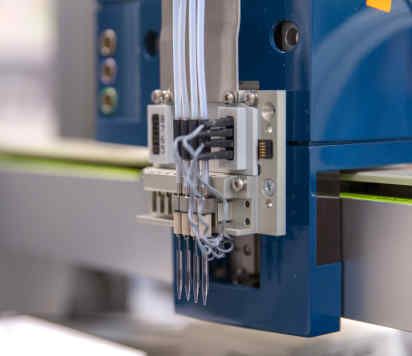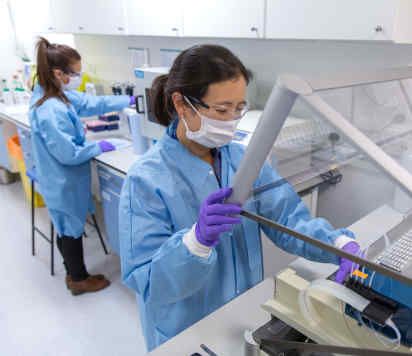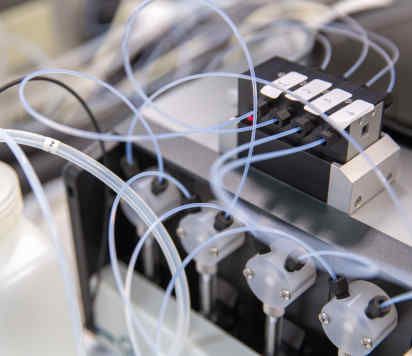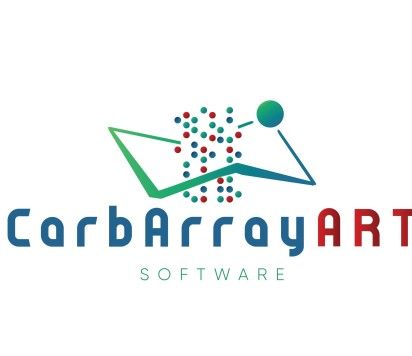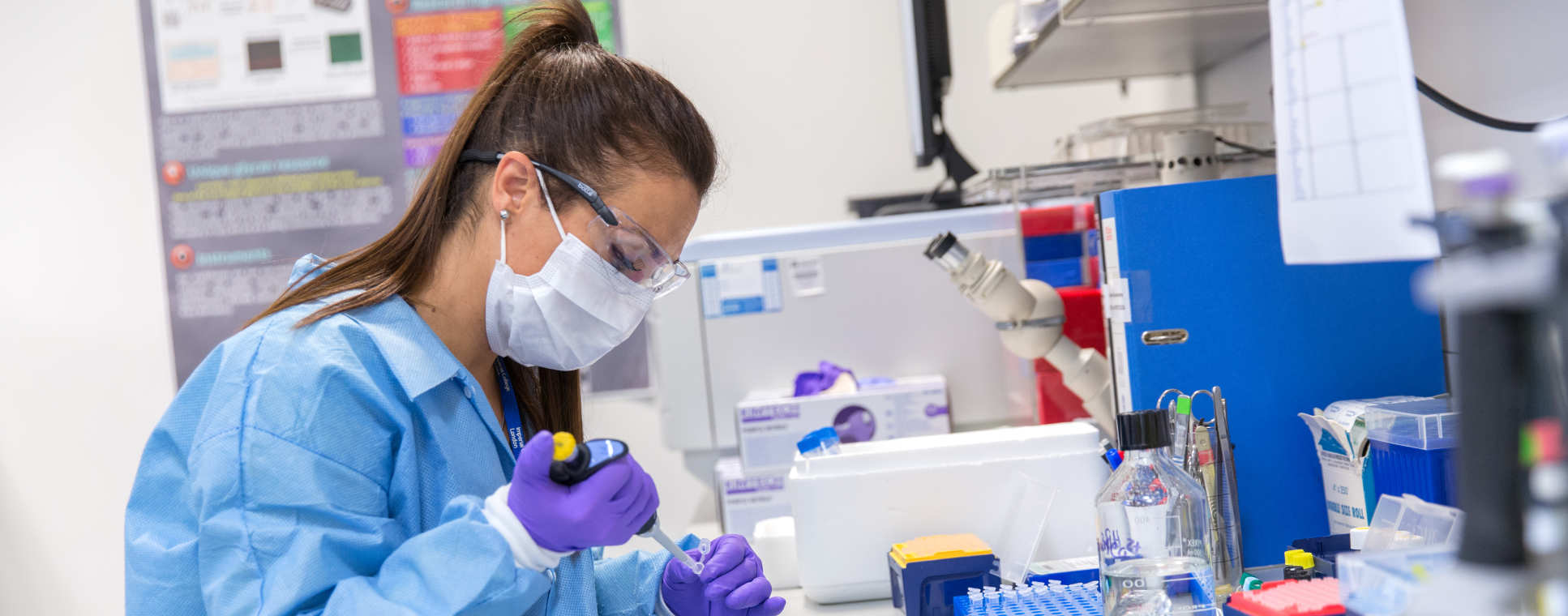
Carbohydrate Microarray Facility
We are a team of biologists, biochemists, immunochemists, chemists and mass spectrometrists and structural biologists with special expertise in the field of carbohydrates, and a library of carbohydrate materials that is currently one of the largest and most diverse in the world. We offer screening analyses and follow-up collaborative studies of diverse carbohydrate recognition systems such as recombinant and natural antibodies and adhesive proteins of bacteria, viruses or their capsid proteins; also proteins that operate in innate and acquired immunity and cancer.
We have technologies to generate ‘designer’ and ‘beam search’ arrays from particular glycoconjugates to characterise novel recognition systems. We interpret and display the microarray results using unique, dedicated software.
We encourage carbohydrate chemists to submit with acknowledgement new compounds for inclusion in screening microarrays. Joint publications arise from novel ligand assignments using these. If you are interested in providing compounds for carbohydrate recognition studies, please contact Dr Yan Liu (yan.liu2@imperial.ac.uk).
How we work
A web-based request system has been implemented for submitting requests for carbohydrate screening microarray analyses, accessible via the blue 'Submit a resource request' button below.
Requests will be reviewed by the microarray analysis team who will correspond as appropriate by email or teleconferencing before the decision regarding analyses. Once approved, a sample submission spreadsheet will be sent to the investigator by email for entering details of samples to be analysed and these will be uploaded to the sample database for filing purposes.
Results of analyses will be provided to investigators as written reports together with histogram charts and tables with fluorescence binding scores. These will be in the form of PDF files sent via email attachment or other suitable file exchange system; Excel files are provided upon request. There will be opportunities for discussions of the data and follow-on collaborations as appropriate. Data will remain confidential until publication or protection of data.
Screening analyses
The NGL-based microarray system contains lipid-linked oligosaccharide probes, with a high content of natural oligosaccharide sequences, some of which are difficult to synthesise: the repertoire includes NGLs derived from diverse oligosaccharide sequences of mammalian-type glycoproteins, glycolipids, and glycosaminoglycans and those from bacterial, fungal and plant polysaccharides. Natural and synthetic glycolipids are also arrayed in parallel. The repertoire is continually expanding in number and structural diversity. Currently, the number of sequence-defined probes is approximately 900, of which 796 are displayed on the webpage; others will be displayed after publication.
We offer microarray screening analyses to the scientific community using our broad-spectrum screening arrays containing around 900 sequence-defined glycan probes. Focused arrays are also available, e.g. mucin array, sialyl glycan array, and bacterial, fungal and plant gluco-oligosaccharide array. Modest charges for recurrent expenses range from £200 to £500 per sample. When a series of samples are proposed for analysis or new probes need to be prepared charges are considered on a case-by-case basis. Please contact Dr Yan Liu (yan.liu2@imperial.ac.uk) or Professor Ten Feizi (t.feizi@imperial.ac.uk) for details.
Submit a resource request, Data and software
Further information and guidance
The carbohydrate-binding assays are most commonly performed with soluble proteins, such as plant lectins, anti-carbohydrate antibodies and recombinant proteins with suitable tags (for example IgG-Fc or hexa-His). Whole viruses or virus-like particles may also be analyzed, either after suitable labeling (for example biotinylation) or using non-blocking antibodies for detection of binding. Culture supernatants and whole sera can also be analysed.
Important: To label proteins, please avoid using fluorophores which have emissions similar to the wavelength of Cy3 which we incorporate into the array fluid to monitor arrayed spots; these will interfere with our array and analysis system. In standard procedures, binding is detected with Alexa Fluor 647-labeled streptavidin. The microarray facility will provide appropriate ‘anti-tag’ antibodies, as well as commercially available biotinylated secondary antibodies (e.g. anti-human or anti-mouse IgG or IgM).
As for the amount of protein required for microarray analysis, we usually request 100-200 µl containing 0.5-1.0 mg of protein per ml of a stable buffered solution (for example Hepes buffered saline) that does not contain detergent. As a preservative for samples we recommend having 0.02% w/v NaN3 in the solution. For serum samples, we suggest ~50 µl per sample for multiple microarray analyses.
Investigators are to contact Dr Yan Liu (yan.liu2@imperial.ac.uk) or Professor Ten Feizi (t.feizi@imperial.ac.uk) if there are any queries.
General enquiries
Carbohydrate microarray analyses
Professor Ten Feizi
t.feizi@imperial.ac.uk
+44 (0) 20 7594 7207
Dr Yan Liu
yan.liu2@imperial.ac.uk
+44 (0) 20 7594 2598
Dr Antonio Di Maio
a.di-maio@imperial.ac.uk
Carbohydrate structural analyses
Dr Wengang Chai
w.chai@imperial.ac.uk
+44 (0) 20 7594 2596
